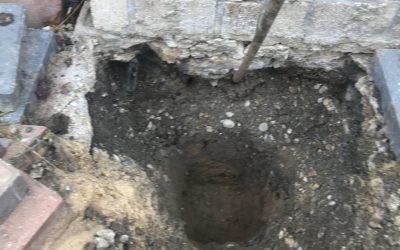Ground-Shifting Changes in How We Tackle Subsidence
The UK’s clay subsidence industry was born in the 1970s, matured in the 1980s and fuelled by global-warming has since grown to become a huge behemoth which already costs the insurance industry millions every year – predicted by PwC to increase by 800% and cost £1.9 billion per year in the not too distant future, if climate change continues.
Something has to change soon – and it can;
Crack Diagnosis – cracks tell a story
The diagnostic art of identifying different types of building movement from crack patters is a skill which takes many years of practical experience to learn properly. I have heard many cases where clients have been told by tradesmen visiting the house, or over the...
UK Geology – and root-induced subsidence (part 2 – Mudstone)
Root-induced subsidence occurs in shrinkable soils, which are mainly clays, or clay-based matrixes. In the UK there are a great deal of different soil types, and layers of differing soils. We need to differentiate between bedrock (i.e. the main older ground type...
Clay Subsidence; Building standards & defective (or inadequate) design (or construction)
In the UK we have rigorous standards for construction. The Building Research Establishment first published guidance for building near trees on clay soils in 1949 – then just an approximate rule of thumb that houses should not be sited closer to a tree than its mature...
Who should I use to handle my subsidence problem?
Insurer-employed vs independent subsidence consultants When you have subsidence, it needs to be handled carefully and properly, by an experienced consultant. Adequate and appropriate investigations need to be undertaken not only to correctly diagnose the precise...
UK Geology – and root-induced subsidence (part 1 – London clay)
Root-induced subsidence occurs in shrinkable soils, which are mainly clays, or clay-based matrixes. In the UK there are a great deal of different soil types, and layers of differing soils. We need to differentiate between bedrock (i.e. the main older ground type...
Is the UK out of step with the rest of the world on subsidence?
Basically, yes! In most other countries, they view cracking to buildings much differently, more like how we would view any other minor building defect. The vast majority of subsidence cracks are minor and not structurally threatening and subsidence is generally not...
When street trees cause subsidence
Everybody likes a tree-lined avenue and street trees are important for several environmental reasons such as air quality as well as their aesthetic value. Local authorities want to keep street trees wherever possible, but in many cases on shrinkable clay subsoils,...
Party Wall Act – Dealing With Damage
What do you do when there is an issue of damage caused by work authorised by a Party Wall Award? If you are an Adjoining Owner and you suspect that damage has been caused by your neighbour’s work then you should notify the Building Owner (or his contractor /...
Avoiding Subsidence – Risk Assessment Surveys & Advice on Avoiding Clay Subsidence
Clay subsidence is something you really don’t want to get and is in most cases completely avoidable. Why bother? Most subsidence damage is minor in structural terms and not dangerous to occupants, but repairs can be extensive, very disruptive and very costly, and it...










